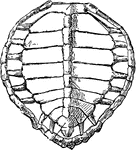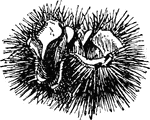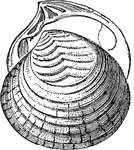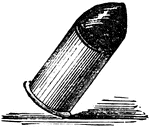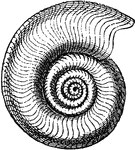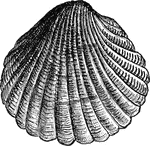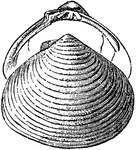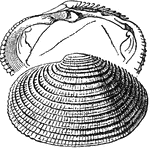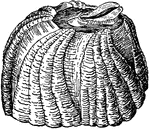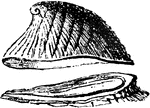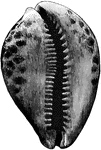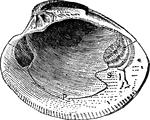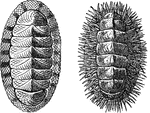
Chitonidæ
They differ from all other mollusks in having a bilaterally symmetrical covered with a number of seperate…

Curved buccina
"The buccina is curved for the convenience of the performer, with a very wide mouth, to diffuse…
Straight buccina
"A copy of an ancient sculpture taken from Blanchini's work, it still retains the original form of the…

Box Tortoise
A tortoise having plastron hinged, so that the shell can be made to close upon entirely conceal the…
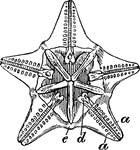
Clypeastrid
A family of irregular sea urchins, flattened into a discoidal or shield like shape, with a mouth central…
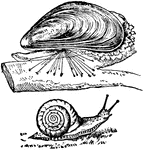
Snail
"Soft unsegmented bodies, bilaterally symmetrical, enveloped by a leathery mantle, which usually develops…
Bagobo
"The Bagobos, who are found about the slopes of Mount Apo, wear ivory or shell earings as big round…
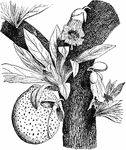
Calabash Tree
A tree of tropical America bearing a gourd like fruit. The hard shell of which is applied to many domestic…
Wampum
A wampum was made of pieces of shining shell, strung, like beads, on strips of deerskin. With some Indians…
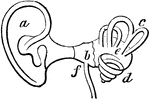
Ear
Interior of the ear. There is external to the head a wide-mouthed tube, or ear-trumpet (a), for catching…

Tree Design
Sometimes called the tree of life. Always associated with religious belief. It symbolizes Divine power…
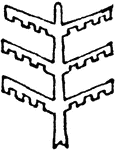
Tree Design
Sometimes called the tree of life. Always associated with religious belief. It symbolizes Divine power…

Tree Design
Sometimes called the tree of life. Always associated with religious belief. It symbolizes Divine power…

Tree Design
Sometimes called the tree of life. Always associated with religious belief. It symbolizes Divine power…
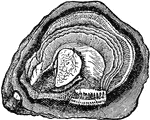
Oyster
An edible bivavle mollusk, closely allied to the mussels, and which forms an important article of commerce.…

Scallop
The name of several species of shell-fish, so called from their round, ribbed shell with scalloped edges.…

Snail
A gasteropodous mollusk, differing from the slug in having a large, spiral shell. The species are very…
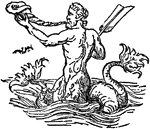
Triton
In Greek mythology, the only son of Poseidon, who is described as one of the minor sea gods. He was…
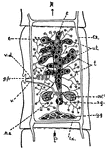
Tapeworm
This diagram shows some stages in the life history of the tapeworm. A, Cysticercus or Bladderworm stage,…
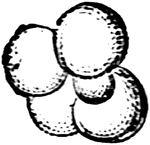
Globigerina Rubra
This illustration shows the calcareous shell Globigerina rubra. These shells are mostly very small,…
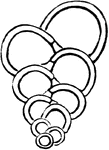
Textilaria Globulosa
This illustration shows the calcareous shell Textilaria globulosa. These shells are mostly very small,…
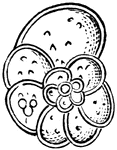
Rotalia Globulosa
This illustration shows the calcareous shell Rotalia globulosa. These shells are mostly very small,…

Grammostomum Phyllodes
This illustration shows the calcareous shell Grammostomum phyllodes. These shells are mostly very small,…
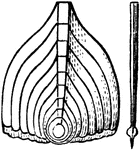
Frondicularia Annularis
This illustration shows the calcareous shell Frondicularia Annularis. These shells are mostly very small,…

Triloculina Josephina
This illustration shows the calcareous shell Triloculina Josephina. These shells are mostly very small,…
Nodosaria Vulgaris
This illustration shows the calcareous shell Nodosaria vulgaris. These shells are mostly very small,…

Lituola Nautiloides
This illustration shows the calcareous shell Lituola nautiloides. These shells are mostly very small,…
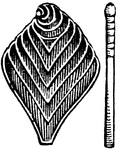
Flabellina rugosa
This illustration shows the calcareous shell Flabellina rugosa. These shells are mostly very small,…

Chrysalidina Gradata
This illustration shows the calcareous shell Chrysalidina gradata. These shells are mostly very small,…

Cuneolina Pavonia
This illustration shows the calcareous shell Cuneolina pavonia. These shells are mostly very small,…

Nummulites Nummularia
This illustration shows the calcareous shell Nummulites nummularia. These shells are mostly very small,…
Fusulina Cylindrica
This illustration shows the calcareous shell Fusulina cylindrica. These shells are mostly very small,…
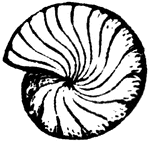
Fusulina Cylindrica
This illustration shows the calcareous shell Fusulina cylindrica. These shells are mostly very small,…
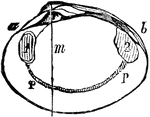
Oyster
Oysters grow for the most part in marine or brackish water. Inside a usually highly calcified shell…

Oyster
Oysters grow for the most part in marine or brackish water. Inside a usually highly calcified shell…
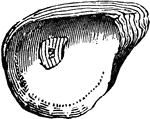
Oyster
Oysters grow for the most part in marine or brackish water. Inside a usually highly calcified shell…
Lingula
The Lingula have tongue-shaped shells with a long fleshy stalk, or pedicle, with which the animal burrows…


